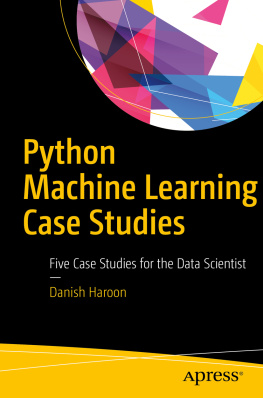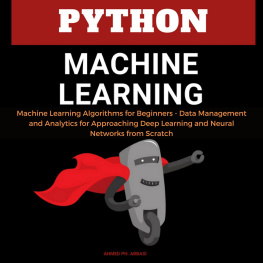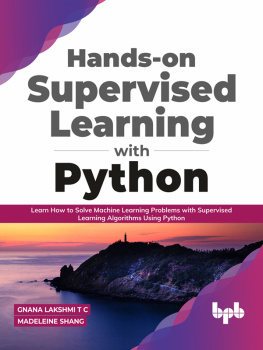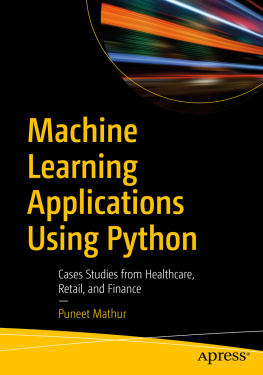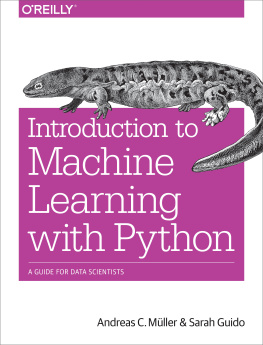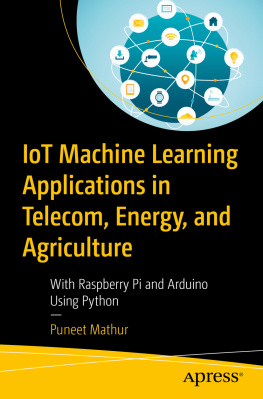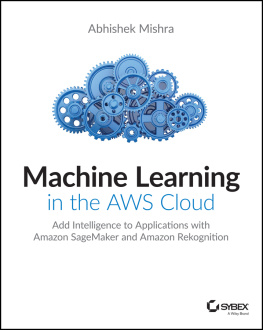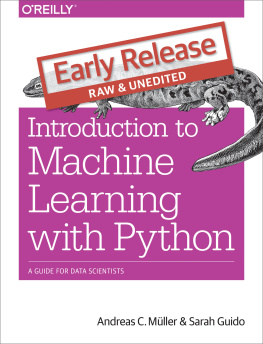Danish Haroon - Python Machine Learning Case Studies: Five Case Studies for the Data Scientist
Here you can read online Danish Haroon - Python Machine Learning Case Studies: Five Case Studies for the Data Scientist full text of the book (entire story) in english for free. Download pdf and epub, get meaning, cover and reviews about this ebook. year: 2017, publisher: Apress, genre: Home and family. Description of the work, (preface) as well as reviews are available. Best literature library LitArk.com created for fans of good reading and offers a wide selection of genres:
Romance novel
Science fiction
Adventure
Detective
Science
History
Home and family
Prose
Art
Politics
Computer
Non-fiction
Religion
Business
Children
Humor
Choose a favorite category and find really read worthwhile books. Enjoy immersion in the world of imagination, feel the emotions of the characters or learn something new for yourself, make an fascinating discovery.
- Book:Python Machine Learning Case Studies: Five Case Studies for the Data Scientist
- Author:
- Publisher:Apress
- Genre:
- Year:2017
- Rating:4 / 5
- Favourites:Add to favourites
- Your mark:
Python Machine Learning Case Studies: Five Case Studies for the Data Scientist: summary, description and annotation
We offer to read an annotation, description, summary or preface (depends on what the author of the book "Python Machine Learning Case Studies: Five Case Studies for the Data Scientist" wrote himself). If you haven't found the necessary information about the book — write in the comments, we will try to find it.
Embrace machine learning approaches and Python to enable automatic rendering of rich insights and solve business problems. The book uses a hands-on case study-based approach to crack real-world applications to which machine learning concepts can be applied. These smarter machines will enable your business processes to achieve efficiencies on minimal time and resources.
Python Machine Learning Case Studies takes you through the steps to improve business processes and determine the pivotal points that frame strategies. Youll see machine learning techniques that you can use to support your products and services. Moreover youll learn the pros and cons of each of the machine learning concepts to help you decide which one best suits your needs.
By taking a step-by-step approach to coding in Python youll be able to understand
the rationale behind model selection and decisions within the machine learning process. The book is equipped with practical examples along with code snippets to ensure that you understand the data science approach to solving real-world problems.
What You Will Learn
Gain insights into machine learning concepts
Work on real-world applications of machine learning
- Learn concepts of model selection and optimization
- Get a hands-on overview of Python from a machine learning point of view
Who This Book Is For
Data scientists, data analysts, artificial intelligence engineers, big data enthusiasts, computer scientists, computer sciences students, and capital market analysts.
Danish Haroon: author's other books
Who wrote Python Machine Learning Case Studies: Five Case Studies for the Data Scientist? Find out the surname, the name of the author of the book and a list of all author's works by series.

